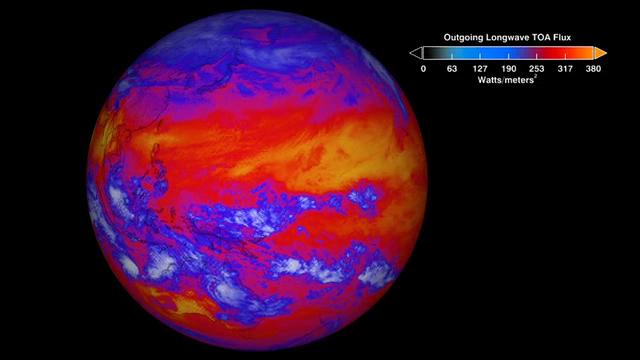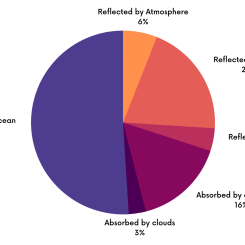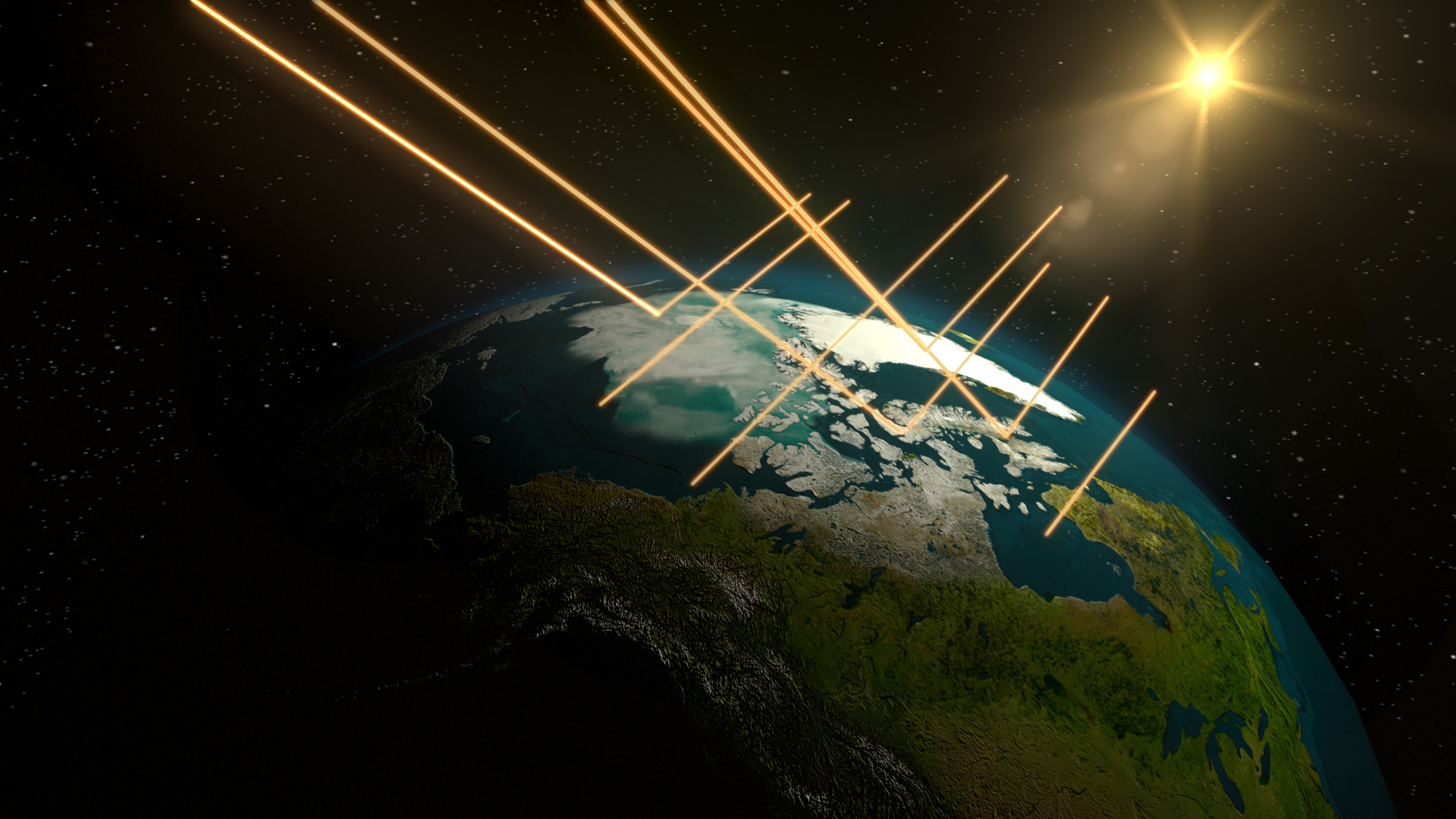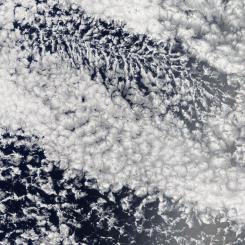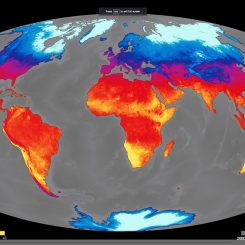Mini Lesson/Activity
Energy and Matter: Shortwave Radiation
Overview
Students review a video showing a global view of the top-of-atmosphere shortwave radiation from January 26 and 27, 2012 to develop an understanding Earth's radiation, or energy, budget.
Student Directions
The Sun's radiant energy is the fuel that drives Earth's climate engine. The Earth-atmosphere system constantly adjusts to stay in balance. The balance is between incoming and outgoing energy. Incoming energy reaches Earth from the Sun. Outgoing energy flows from Earth back out to space. This balance is called Earth's energy (or radiation) budget.
Most energy received from the Sun is in the visible (or shortwave) part of the electromagnetic spectrum. About 30% of the incoming solar energy is reflected. It is reflected back to space by clouds and aerosols or bright surfaces. The ratio of reflected-to-incoming energy is called "albedo". This is from the Latin word meaning whiteness.

This global view shows CERES top-of-atmosphere (TOA) shortwave radiation from January 26 and 27, 2012. Light energy reflected from Earth is shown in shades of blue and white. The unit is in Watts per square meter. The brightest-white areas are generally clouds. These areas are reflecting the most energy out to space. The darker blues areas reflect much less. Increasing cloud cover and snow/ice cover all tend to increase the ability of Earth to reflect energy out to space.
For more information on the Clouds and Earth's Radiant Energy System (CERES) see http://ceres.larc.nasa.gov.
Credit: NASA Scientific Visualization Studio
Steps
- Review the text and the Shortwave Radiation (2012) video above and answer the questions. Check with your instructor on how to submit your answers.
- What time period does this video show shortwave radiation on Earth?
- What colors represent areas where the most energy is being reflected back out to space? Least energy?
- What are the units of these measurements?
- What drives Earth's climate engine?
- What part of the Earth system is always adjusting to maintain a balance between Earth's incoming and outgoing energy?
- What parts of this system reflect energy back to space?
Teacher Note
Teachers, these mini lessons/student activities are perfect "warm up" tasks that can be used as a hook, bell ringer, exit slip, etc. They take less than a class period to complete. Learn more on the "My NASA Data What are Mini Lessons?" page.
Teachers who are interested in receiving the answer key, please complete the Teacher Key Request and Verification Form. We verify that requestors are teachers prior to sending access to the answer keys as we’ve had many students try to pass as teachers to gain access.
Disciplinary Core Ideas:
- ESS2A: Earth Materials and Systems
Crosscutting Concepts:
- Stability and Change
Science and Engineering Practices:
- Developing and Using Models

